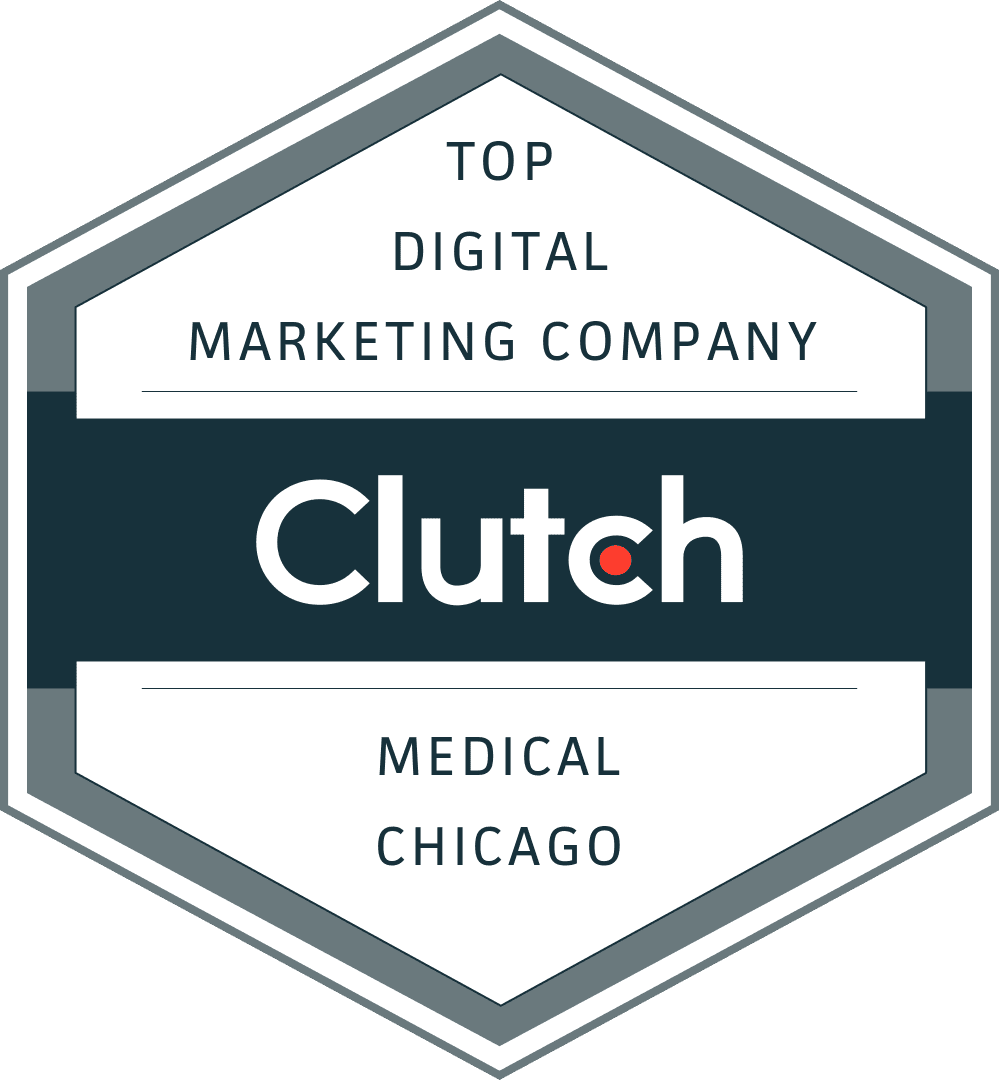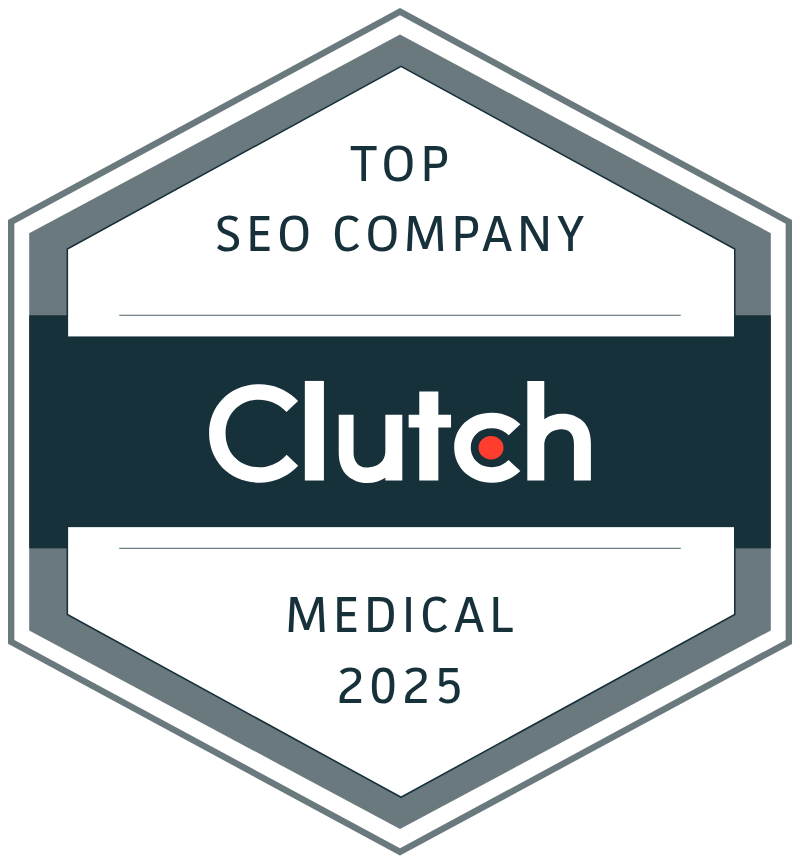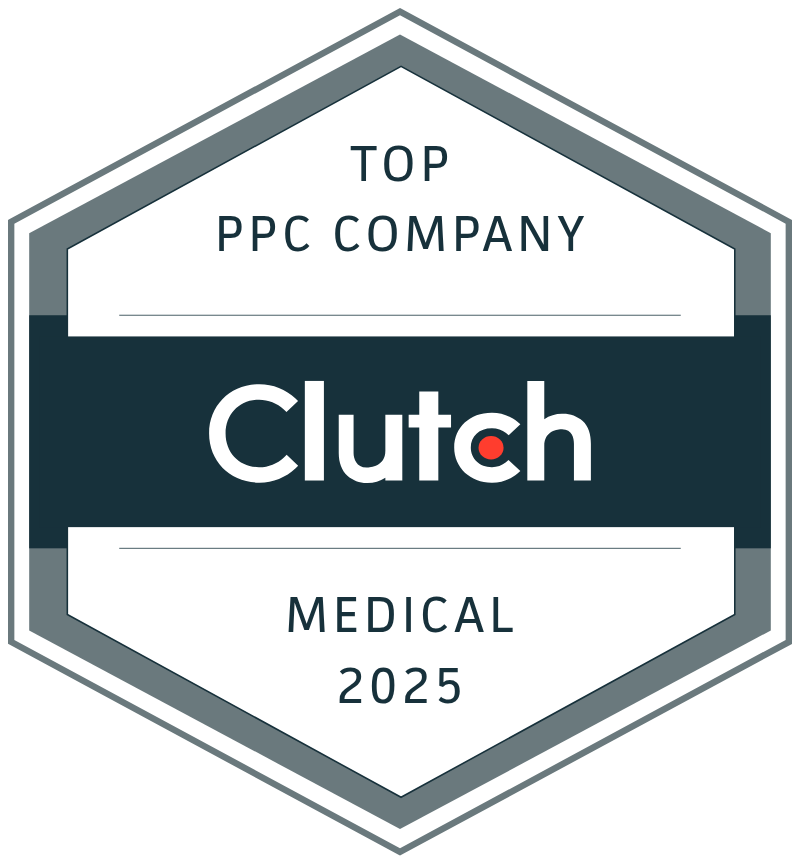
Healthcare organizations might not have been quick to embrace the digital world, but more and more companies are begi...
Helped a Chicago medical billing company optimize their site and increase leads by 80%
Redesigned a telemedicine provider website helping small to mid-sized businesses take care of their employees virtual healthcare needs
Developed an eCommerce website for one of the largest medical device manufacturers in the world driving $50+ million in transactions every year
.png')
Schedule a consultation with a DAP expert today and find out what we can do for your business.





In healthcare, your organization’s digital presence plays a pivotal role in achieving success. Patients discover your company online to help manage their existing conditions, improve patient outcomes, and reduce readmission rates. In fact, 80% of internet users searched for health related topics online. That’s why premier healthcare website development services can have a direct impact on your bottom line.
Partner with DAP to create a healthcare website that can elevate brand perception, facilitate a positive patient journey, and boost retention. A website that welcomes and guides patients toward the desired result will improve your business bottom line. A website that consistently provides a healthy user experience will keep consumers coming back for more. Here at Digital Authority Partners, we’ll work closely with your team to develop a website optimized for every stage of the patient journey and beyond.
Book a meeting directly here
The cost to build a healthcare website depends on the size, scope, and requirements of the project. Consider that you’ll need technical web engineering, website design, and more to create the ideal website for your organization. Your list of desired features, such as a live chat tool, will play a direct role in determining the final cost to build your website. These projects typically range from $45,000 to $125,000.
To build a healthcare website, you have the option to start from scratch (requiring technical web development expertise), utilize a website builder, or partner with healthcare website development experts. When you choose the latter option, everything is done for you. Your website will be created according to your goals and audiences.
From the start of the design process to the official launch, the healthcare website development process often takes between two and four months. From planning to design to tool integration and testing, the official schedule for your website will once again depend on the scope of the project. At Digital Authority Partners, we’ll work with you to layout a timeline that allows for efficiency and premium quality.
89% of patients in the United States search their symptoms on Google before going to the doctor–you want to be a part of the information they find. You need a healthcare website if you provide any type of healthcare service. A well-developed website will help patients find your organization, understand your value, and schedule appointments. Without a website, you’ll miss out on countless patients.
The primary characteristic of a great healthcare website development team is a commitment to understanding your brand, your audiences, and your needs. You should also seek out a development team that has extensive experience creating high-performance websites within the healthcare industry. This ensures the team can tailor proven healthcare web strategies to your organization when crafting your website.
Questions about your website development project? Schedule a free consultation now with a DAP web development expert today.


Healthcare organizations might not have been quick to embrace the digital world, but more and more companies are begi...

Creating a healthcare website is a complex task and one that most organizations will outsource to a marketing agency....

An amazing, user-friendly online presence is something every business aspires to. As such, healthcare website develop...

Those statistics highlight the need for every healthcare organization to develop a high-quality website. While a poor website or no website can cost you countless patients and profits, the ideal website will boost your organic visitors, patients, consumer experience, and retention.
But what exactly is healthcare website development?
Put simply, it’s the process of creating a website for your healthcare organization from scratch.
When executed by healthcare website development experts, this process tailors proven industry strategies and trends to your unique wants, needs, and audiences.
The final website should serve a targeted community with accurate information while building trust in your healthcare organization as a brand. And through nuanced strategies, your website should organically persuade visitors to get in touch or book appointments.
How is healthcare website development done?
When it comes to healthcare organizations, website development should include a focus on a number of factors unique to the industry. Protection, security, and accessibility will be at the forefront of any successful healthcare website development process.
From planning and design to engineering and optimization, healthcare website development is the process of creating a website for a healthcare organization based on the specifications listed above.
Think of your website as an ambassador for your healthcare organization.
A well-designed, sophisticated website will welcome visitors with open arms, seamlessly guiding them through the consumer journey while delivering high-quality content that meets your audience’s needs. Yet the benefits of a premier website reach far beyond consumer expectations.
As a reflection of your organization, your website gives visitors a sense of your brand as a whole. A poorly designed website can cause visitors to expect poor service from your organization. In contrast, a clean, informative, and easy-to-navigate website will encourage consumers to view your personnel and services through a positive lens. This allows you to cultivate a recognizable and reputable brand.
It’s human nature to spend more time with something you enjoy. So, put yourself in the shoes of your website visitors. If you arrive at the homepage and find a confusing layout with no clear direction, you’ll leave that website. If you arrive at a page that clearly illustrates a unique benefit or provides the information you’re looking for, you’ll spend more time on that website. This builds customer loyalty and retention.
88% of healthcare appointments are scheduled by phone. A well-designed healthcare website will leverage this type of insight by crafting custom calls to action (CTAs) that encourage consumer calls. In turn, you’ll book more appointments and convert more customers into patients.
More than 60% of healthcare consumers run an online search before scheduling an appointment in most major verticals. That means qualified leads are searching for the services you provide as a healthcare organization. Expert website developers can design your website to help search engines like Google understand how your website benefits searchers. In turn, search engines are more likely to serve your website on the first page of results. That means more exposure and more organic visitors.
From measurable benefits, like more sales-qualified leads, to intangible benefits, like enhanced brand perception, a well-designed website can have a significant and sustainable impact on your organization.
Due to unique requirements within the healthcare industry, your healthcare website must include a comprehensive suite of characteristics and features to achieve optimal results.
Luckily, experienced healthcare website developers like Digital Authority Partners understand these specific needs and how to efficiently integrate them into your website.
Let’s take a look at everything your healthcare website should include…
88% of healthcare appointments are scheduled by phone, and callers convert 30% faster than web leads. That means your website should both actively and passively encourage visitors to pick up the phone and call.
Online reviews are used by 94% of healthcare consumers to evaluate providers. So, showcase your best reviews in highly visible areas within your website. You’ll build credibility while helping visitors understand how you can directly benefit them.
5% of all Google searches are health-related. That means your target audience is likely to be searching for information you can provide. Through a comprehensive blog, you can target keywords and deliver information that attracts and satisfies a larger pool of healthcare consumers.
While you want to encourage as many inbound phone calls as possible, you also want to make sure those calls are qualified. If you don’t offer a specific type of treatment, you don’t want to waste resources on consumers who only want that treatment option. So, list your service information to qualify callers.
To build credibility, be sure to include information about the doctors and other personnel within the organization. These biographies should include certifications, degrees, awards, and any other information that will enhance their perceived value in the eyes of consumers.
With virtually everyone carrying around a mobile computer in their pockets, responsiveness is paramount for your healthcare website. In fact, 90% of the global internet population uses a mobile device to go online. Responsive design presents your website in a mobile-friendly way, ensuring a positive user experience.
For accessibility, privacy, and security, your website must follow various regulations either unique or important to the healthcare industry. First is ADA compliance, which makes your website accessible to all users, including those with disabilities. HIPAA compliance protects patient data. And HITECH compliance offers additional protection and security.
High-quality healthcare website developers can build a website that ticks each of those boxes while conveying the unique benefits of your organization.
The healthcare industry is constantly evolving to meet the changing demands and expectations of consumers.
Those evolutions extend to websites, where the digital presence of any healthcare organization must adapt in order to attract, convert, and retain patients.
To help you remain fresh and relevant, let’s discuss some of the key healthcare website trends of today and tomorrow…
For a variety of reasons, minimalism is a rapidly growing trend among healthcare websites. First and foremost, it facilitates a clean, easy-to-navigate interface that improves the user experience. Second, it reduces load times, which has a significant benefit to bounce rates. These combine to keep visitors engaged and focused on key CTAs.
Accessibility plays a key role in any healthcare website. All users, regardless of disability, should have an equal experience, which means those with vision disabilities need large, clear fonts. Incorporating big, bold typography can reduce bounce rates and establish a professional brand identity.
Until now, most healthcare websites have focused on loading entire pages as soon as a user accesses that page. By using a technique called lazy loading, which only loads the content users are viewing, healthcare website developers are decreasing page load times. As a result, your website will experience better SEO and lower bounce rates.
While websites and other digital content give you the chance to efficiently disperse information, it’s important to healthcare consumers that your organization feels human as well. Add stock images of patients or if permissable real team members to establish a human connection, which has been shown to increase conversions by as much as 35%.
72% of consumers say they would rather learn about a product or service via video than text. So, give the people what they want. More and more healthcare websites are incorporating embedded videos to explain services, present unique benefits, or engage consumers.
These healthcare website trends are having massive impacts on visitor counts, conversions, user experiences, and more. Make sure your website is delivering those benefits by leveraging every one of these trends.
Before arriving at a fully designed website furnished with every tool and feature relevant to the healthcare industry, the development team must first know where to begin. That’s why the initial step of website development is an exploratory one.
To start, share your goals, ideas, and concerns. This step is about gaining a mutual understanding between developers and brands in order to determine what the final iteration of your website should be.
All parties should be aligned in the long-term vision at this point.
Armed with a set of project goals to work toward, the planning process then begins. This will include a comprehensive audit of any existing website or digital content belonging to your organization. A thorough analysis can reveal weaknesses and opportunities for growth, all while giving the development team a sense of your brand voice and how you communicate with your audience.
Experienced healthcare website developers, like Digital Authority Partners, will develop a roadmap to success. This roadmap will identify required resources, determine the project timeline, and give detailed directions for completing each stage of the plan.
The action phase then begins. Developers well-versed in the healthcare industry will develop the website, end to end.
This development period will include setting up the technical aspects of the site, laying out all images and other media, and designing the website with the user experience in focus.
During this process, accessibility and security should be a top priority. Your development team should have comprehensive knowledge of ADA compliance, HIPAA requirements, and more. These regulations ensure that your website is accessible to all users, and that all patient information is protected.
Once the website is constructed, the testing phase begins. Through the evaluation of key measurables and the user experience, consistent testing will be administered until all specs are met.
Finally, it’s time to launch your healthcare website.
Yet the development process doesn’t end at launch. A premier development team will continue to monitor metrics and adjust your website to achieve optimal results.
To achieve your ideal healthcare website, you must first find the ideal development team. Here’s what you should be looking for.
As you know, healthcare is an industry unlike any other. From consumer expectations to regulatory requirements, developers need intimate knowledge of the industry to produce an optimized website. So, ensure the developer you choose has extensive experience within healthcare.
When choosing a development team, look for reviews and measurable results. This process will give you a sense of the impact the developer can have on your organization through the crafting of a new website. Pay close attention to the developer’s ability to meet deadlines and work within a specified budget.
To ensure your website is accessible for everyone, developers should have a deep understanding of ADA compliance and Web Content Accessibility Guidelines (WCAG). These rules and guidelines should determine things like language, typography, alt text, technical engineering, and more.
To protect patient data, such as health records and phone numbers, your healthcare website should be compliant with the Health Insurance Portability and Accountability Act (HIPAA). Find developers who understand HIPAA, its importance, and how to achieve compliance without disrupting the user experience.
Much like HIPAA, the Health Information Technology for Economic and Clinical Health Act (HITECH) exists to protect consumers and patients. Developers should understand how to integrate HITECH protocols to deliver secure access to health information while keeping that information safe from data breaches and more.
There are plenty of web developers who can create a website, but not many who can craft a website that aligns with your vision. Find healthcare website developers who can tailor proven, trend-setting development strategies to your brand, your audience, and your needs.
A good website development team offers guidance until launch. A great website development team offers guidance and support long after a successful launch. Look for developers who showcase a genuine desire to achieve the satisfaction of every client by providing long-term support.
Developing a high-quality website is the first step in achieving long-term, sustainable success for your healthcare organization.
A premier healthcare website offers all of these benefits and more:
Perhaps most importantly, your website serves as the foundation from which you can attract, convert, and retain consumers.
So, there’s plenty to do once your healthcare website is up and running.
First, commit to regular evaluations and updates. Changing regulations and consumer behaviors mean a website optimized today won’t necessarily be optimized a year from today. So, establish a plan to monitor performance and make adjustments when needed.
Second, set a robust digital marketing strategy to flood your new website with organic and targeted traffic. SEO, content marketing, technical SEO, paid search—all of these and more can be leveraged to bring qualified traffic to your site. From there, the user experience and proven design elements of your optimized website will turn visitors into qualified leads, and qualified leads into long-term consumers.
Third, gain consumer feedback to optimize your messaging, design, and more. In addition to analysis tools, ask consumers how they feel about certain aspects of your website and brand. This process can reveal unique opportunities or subtle changes in consumer behavior that allow you to make beneficial changes months or years before they would otherwise become obvious.